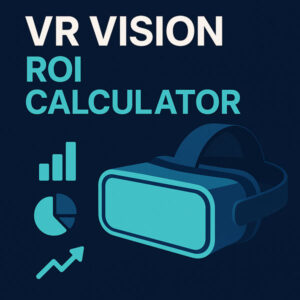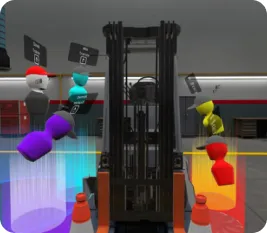Virtual Reality Training Simulations: Immersive, Risk-Free Learning for the Modern Workforce.
Virtual reality training simulations deliver immersive, risk-free learning that boosts retention, cuts costs, and supports safety and sustainability.

Ultimate Guide to VR Training
Immersive learning technologies simulate real-world environments. They offer a safe platform for learners to practice necessary skills. This is an in-depth look into their realm and usage.
Where Virtual Reality Training Simulations are Making Waves
Our clients are our most significant advocates. Discover how immersive simulations have positively impacted their operations and achieved transformative results.


“Toyota procured hundreds of Meta for Work (Quest 2) devices that were shipped to dealers across the USA/Canada. VR Vision helped with the LMS integration, device management setup, and consulted on change management for increased user adoption. Our vision is to provide a learning environment that resonates with current and future generations of technicians.”
Holly Brotzman
Dealer Training Manager
Empowering over 10,000 dealer technicians annually with immersive VR training.
"Virtual reality is a huge step forward for our already best-in-class training program. If anybody is going to make immersive learning the next big thing in clean energy, it’s Meta & VR Vision."
Samuel Akey
Manager, Renewables Training & Training Innovation
Maintenance & repair training was completed 65% faster in VR compared traditional methods.
“VR Vision and Siemens collaborated to enhance crane operator training using virtual reality. Replacing Siemens' costlier, riskier on-site methods, VR Vision's simulation provided a lifelike, safe environment for training. The result: slashed costs, quicker training, and increased operator competence, showcasing VR's potential in industrial training.”
Per Bomholt
Global Competence Manager
Training over 30,000 renewable wind technicians across the globe.

"They are exceptional in meeting timeline demands even when they were changed requiring acceleration of updates. VR Vision remained customer focused but also focused on delivering a quality product so they did not take short cuts. The process included a few rounds of quality checks and modifications based on early user feedback before the final product was released."
Scott Findley
Sr. Director of Global Innovation
Immersive learning accelerated the onboarding and skill development of maintenance personnel.

"Virtual reality training at Hydro One unlocks a world of possibilities, offering immersive experiences, practical skill development and collaborative learning for our employees.”
Teri French
Executive Vice President, Operations and Customer Care
2000+ customer care team members being onboarded using virtual reality.


Types of Technology for VR Training Simulations
VR Vision provides innovative virtual reality training solutions. It specializes in two dynamic VR training modes: Interactive 360 Video and CGI Simulations.
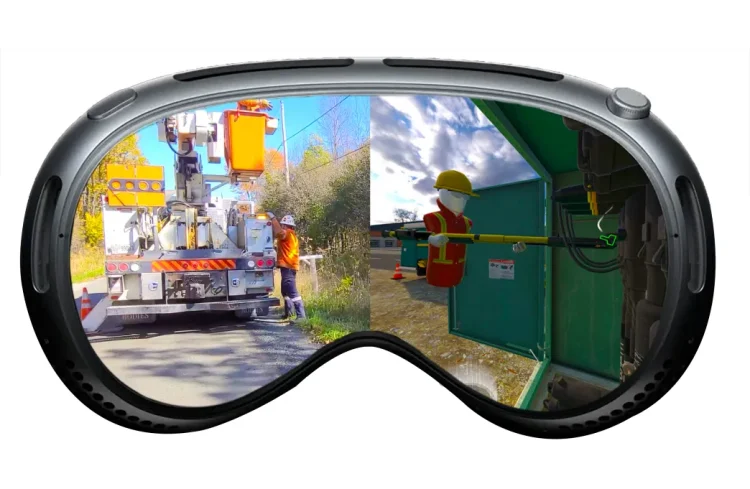
Interactive 360 Video
CGI Simulations
Stereoscopic 360 videos are very immersive. They are great for training on soft skills and safety/orientation. They are better than traditional videos because they are more engaging and immersive.
Immersive digital doubles are used to train on complex procedures. They do it quickly and accurately. They eliminate the need for costly repetition and errors. They are ideal for people who need to train in technical jobs.
Unveiling Possibilities. Crafting Realities.
At VR Vision, we don't just create virtual reality—we tailor-make experiences. Join us on this transformative journey and let's redefine the horizons of enterprise training together.
1.
Virtual Blueprinting
Planning & Development
Every incredible journey begins with a single plan. Our meticulous planning process ensures your vision is perfectly charted in the virtual world.
Our experienced team works closely with you. They want to understand your training needs and goals. This personalized approach creates a strong foundation for your virtual reality training. It helps you succeed and adapt in the long term.
2.
Immersive Development
Shape the Virtual, Perfect the Reality
From concept to code, we breathe life into your virtual training ideas.
We use advanced VR tools to create a realistic training environment. Our focus on accuracy helps trainees learn practical skills faster, improving efficiency.
3.
Seamless Integration
From Our Realm to Yours
Seamlessly integrating the power of virtual reality into your organizational infrastructure.
You can say goodbye to complicated setups and tech headaches. Our deployment process makes sure that your VR training solutions are integrated easily. This provides a hassle-free experience for both trainers and trainees. This means you will have more time for training and less time for troubleshooting.
4.
Vision Portal
Your Control Center in the Cloud
Oversee, optimize, and orchestrate your VR training experiences, all from one centralized hub.
The Vision Portal is more than just a management tool—it's the future of VR training oversight. Monitor user progress, gather insightful analytics, and tweak training modules on-the-fly. Empower your training teams with data-driven insights, ensuring continuous improvement and adaptation.
Virtual Reality Training Modes
Technology supports various training modes, allowing trainers to securely and efficiently connect with their teams, collaborate, assess, and simulate scenarios in virtual setting.
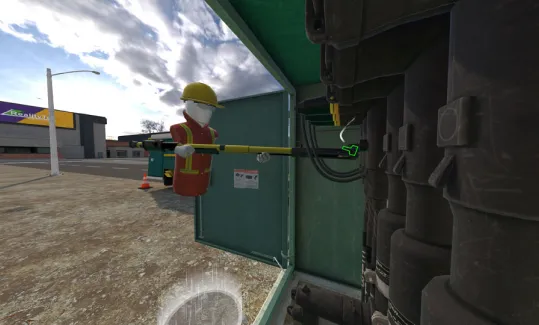
Single Player Modes
- Guided
- Interactive
- Evaluation
- Education
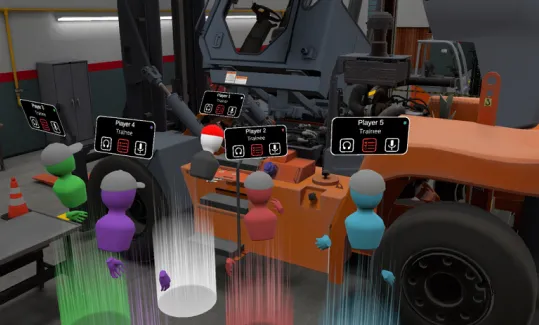
Multiplayer Modes
- Trainer Led Education
- Persistant State Simulations
Benefits of Virtual Reality Training Simulations
Technology helps trainers connect securely and efficiently with their teams. It also allows them to collaborate, assess, and simulate scenarios in a virtual setting.

Eliminate Risk
- Zero risk/harm environments
- Eliminate training injury & accidents
- Simulate hazardous scenarios

Increase Retention
- Faster learning through exposure
- Replay recorded sessions
- Immersive 1:1 environments

Standardize
- Optimize learning & workflow
- Surpass audits & meet compliance
- Train more people faster

Connect Teams
- Work anywhere in the world
- Enhanced collaboration
- Easy access to specialists/expertise

Cut Costs
- Reduce travel expense
- Lower insurance premiums
- Save on space requirements

Skill & Knowledge Assessments
- Interactive post-training assessments
- Monitor & measure employee results
- Analytics and performance tracking
Virtual Reality Training Simulation Hardware
Technology helps trainers connect securely and efficiently with their teams. They can collaborate, assess, and simulate scenarios in a virtual setting.

Standalone VR Headsets
Scalable wireless functionality for enterprise education and training with built-in processing.

PC-Powered VR Headsets
For training with ultra high-end vehicle simulations requiring external computers to run.
Development Process for VR Training Simulations
Our development experts create virtual reality courses that fit each organization's needs. They use a strict process. They work with client experts to make sure trainees and trainers get the best results.

Digital Learning Transformation
Virtual Reality is a powerful tool for teaching and sharing knowledge. It helps remove barriers to access and makes learning more interesting. It has the potential to revolutionize the way we learn, making it the next big thing in education.
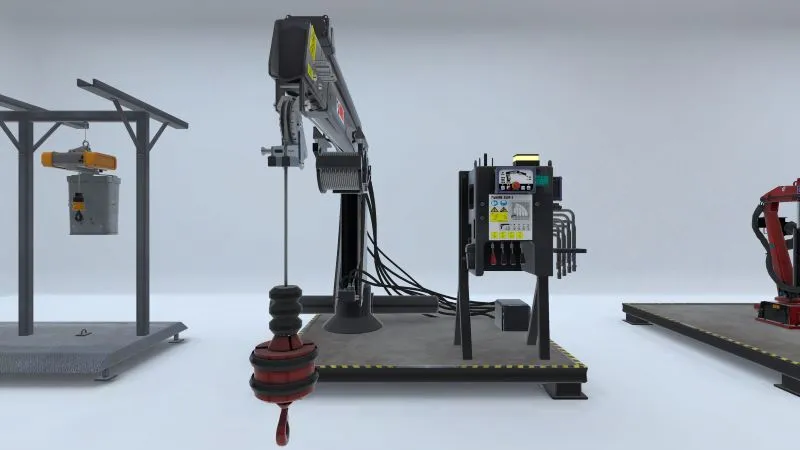
VR for Hard Skills & Technical Training
Simulate complex scenarios in a scalable and standardized manner. Help cultivate useful habits in a secure and quantifiable fashion.
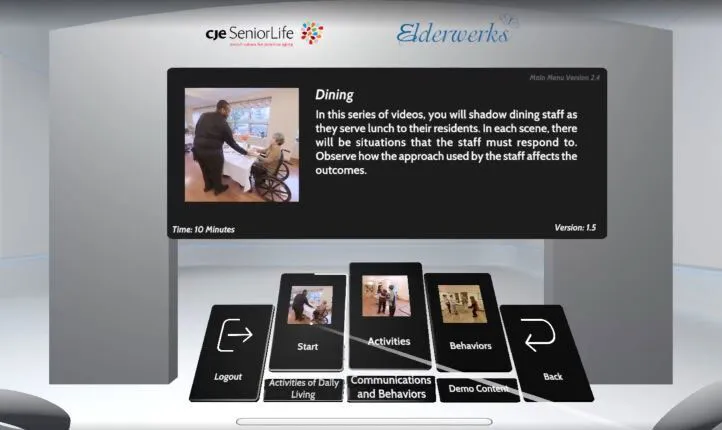
VR for Soft Skill Development
Expose team members to challenging environments and scenarios. Measure their reactions and use the data to help them develop and improve.
Try Our ROI Calculator
The ROI calculator is designed to help evaluate the potential financial benefits of VR training. It is effective, but certain aspects are hard to measure in a consistent manner.
VR Course Deployment
VR Vision is a turnkey solution provider. We are involved in every step of the VR implementation process. This includes the initial planning stages and providing tools for trainers to support their VR courses.

Hardware Setup

Hardware Setup
Consult on the best device for each use case, how to perform firmware updates, labelling, and initial device configuration.

IT Integrations / Networking

IT Integrations / Networking
Ensure that the necessary networking infrastructure is in place to securely implement VR and whitelist the necessary websites.

(LMS) Integration

(LMS) Integration
Integrations can connect VR applications to your learning management system. This enables trainers to schedule VR learning and view high-level analytics.
Supported Learning Management Systems
The Vision Portal is compatible with all modern LMS's. It can be seamlessly integrated using direct APIs, XAPI, or SCORM2. Trainers can use their LMS to schedule VR learning, track performance, and monitor high-level analytics.
Sample of LMS’s we have integrated with:



Vision Portal Integration
Trainers can use the Vision Portal to view all their courses. They can manage groups of people in VR simultaneously, tracking progress in real-time and sending messages. They can also view things from the headset's perspective via a live VR feed. The system gives trainers the power to skip steps if trainees get stuck, access a wide range of analytics, and more!
Where Immersive Simulations are Making the Biggest Impact
Virtual reality training is having a tremendous impact in areas that are difficult to train and master in the real world. It is changing the way employees are trained and developed to eliminate risk and improve efficiency. VR lets workers practice and improve their skills in a safe and controlled environment, which means they can avoid making mistakes in real-life situations.
This is particularly valuable for high-risk industries such as energy & utilities, manufacturing, automotive, and healthcare.
Virtual Reality Training Simulations: The Future of Workforce Learning
Virtual reality training simulations are rapidly transforming how enterprises prepare their workforce. Unlike traditional training methods—classroom lectures, manuals, or basic e-learning—VR training simulations place learners directly inside immersive environments that replicate real-world conditions. This creates safer, more effective, and scalable learning experiences. Industries from utilities and energy to healthcare, automotive, and manufacturing are adopting VR to reduce costs, improve safety, and drive measurable ROI.
At VR Vision, we’ve seen firsthand how virtual reality training simulations enable employees to practice critical procedures, rehearse high-risk tasks, and gain hands-on experience—without real-world risks. This page will dive deep into what VR training simulations are, why enterprises are investing in them, and how organizations like Toyota, Siemens, Avangrid, and Hydro One are already experiencing results.
Why Enterprises Are Turning to VR Training Simulations
Traditional training models are expensive, inconsistent, and often ineffective. Classroom lectures lack engagement. On-the-job training exposes workers to risk. E-learning modules fail to replicate physical tasks.
Virtual reality training simulations address these issues by:
- Cutting Costs: Reduce travel, instructor, and equipment expenses.
- Improving Retention: Studies show VR learners retain up to 75% of material vs. 10% for lectures.
- Boosting Engagement: Gamified, interactive environments keep employees invested.
- Driving Measurable ROI: Analytics dashboards track performance, completions, and error rates.
Real-world examples:
Toyota: Using VR to train workers on manufacturing safety and procedures. Read full case study here.
Avangrid: Leveraging VR for wind turbine maintenance and electrical troubleshooting. Read full case study here.
